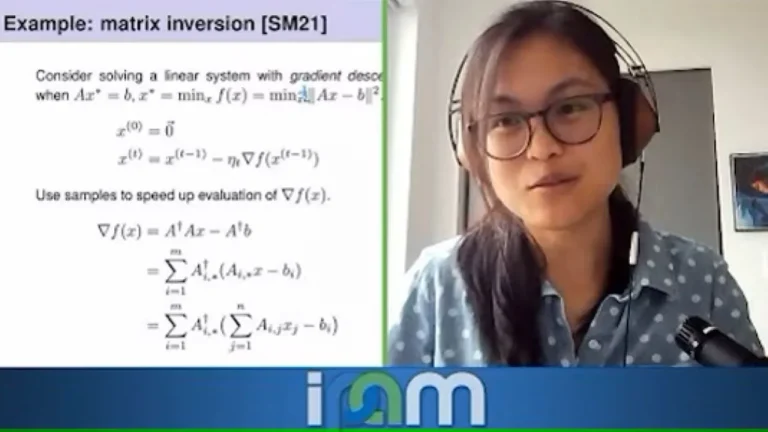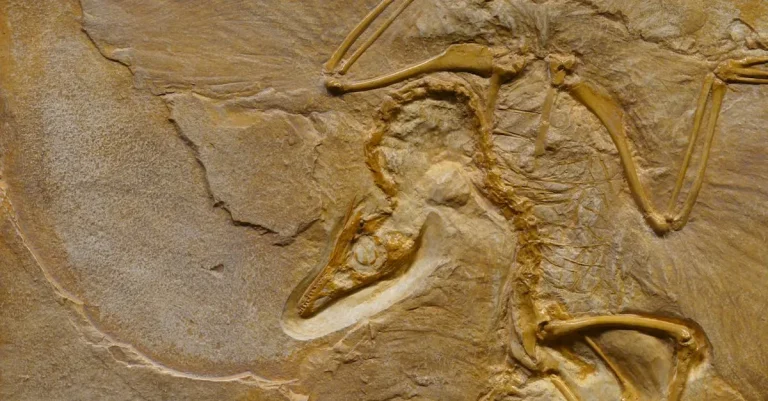Is Calculus Used In Computer Science? Examining Its Applications
Calculus is the mathematics of change and motion. But does an analytical field like computer science rely on calculus concepts? If you’re short on time, here’s a quick answer: While not all computer science careers require calculus, it is used extensively in areas like machine learning, computer graphics, and data analysis.
In this comprehensive guide, we’ll analyze the overlap between calculus and computer science. We’ll look at specific subfields of CS that leverage calculus like algorithms and AI. We’ll discuss calculus prerequisites at universities.
We’ll also hear perspectives from computer science professionals on how they apply calculus concepts. By the end, you’ll understand the critical role high-level math plays in many aspects of computer science.
Calculus in Machine Learning and AI
Neural Networks
Calculus plays a crucial role in the development and training of neural networks, which are a fundamental component of machine learning and artificial intelligence systems. Neural networks are composed of interconnected nodes, or “neurons,” that process and transmit information.
The activation and learning processes within neural networks heavily depend on calculus. Specifically, calculus is used to optimize the weights and biases of the network through a process called backpropagation.
Backpropagation involves calculating gradients and using techniques like gradient descent to adjust the network’s parameters, ultimately improving its performance and accuracy.
Optimization Algorithms
In computer science, optimization algorithms are used to solve complex problems by finding the best possible solution. These algorithms often rely on calculus to optimize objective functions and make informed decisions.
Calculus helps in determining the rate of change of a function and finding its extrema, which are essential for optimizing algorithm performance. Techniques like gradient descent and convex optimization heavily leverage calculus concepts to iteratively improve the solution’s quality and convergence speed.
Statistical Learning Models
Statistical learning models, such as regression and classification models, are widely used in machine learning and AI applications. These models make predictions based on patterns and relationships discovered in data.
Calculus is essential for estimating parameters, calculating probabilities, and optimizing the model’s performance. For example, in linear regression, calculus is used to find the line of best fit that minimizes the sum of squared errors.
Gradient descent, a calculus-based optimization algorithm, is also commonly used to train statistical learning models, adjusting the model’s parameters to minimize the prediction error.
Calculus in Computer Graphics
When it comes to computer graphics, calculus plays a crucial role in various aspects of the field. Whether it’s creating realistic 3D models, rendering lifelike images, or simulating complex animations, calculus provides the necessary mathematical foundation.
Let’s explore how calculus is applied in different areas of computer graphics.
Modeling Shapes
One of the fundamental tasks in computer graphics is modeling shapes. Calculus helps in defining and manipulating these shapes by determining their geometry and behavior. By using calculus, computer scientists can describe curves, surfaces, and volumes with precision.
For example, the concept of parametric equations, which involve calculus, allows for the creation of smooth and intricate curves that are used in character animation, game design, and computer-generated imagery.
Rendering Techniques
Rendering is the process of generating an image from a virtual scene by simulating the behavior of light. Calculus is used in rendering techniques such as ray tracing and rasterization. Ray tracing involves tracing the path of light rays and calculating their interactions with objects in the scene.
This process requires solving complex equations involving derivatives and integrals to determine the color and intensity of each pixel in the final image. Rasterization, on the other hand, involves converting mathematical representations of objects into pixel-based images and requires calculus to determine the shading and surface properties of these objects.
Animation and Simulation
Calculus also plays a significant role in animation and simulation in computer graphics. When creating animations, calculus is used to define the motion of objects and characters. It helps in determining the velocity, acceleration, and position of these entities over time, resulting in realistic and smooth animations.
Simulation, on the other hand, involves modeling real-world phenomena such as fluid dynamics, physics-based interactions, and particle systems. Calculus enables computer scientists to create accurate and dynamic simulations by solving differential equations and applying numerical methods.
Calculus in Data Science and Analytics
When it comes to the field of computer science, many people often associate it with programming and coding. However, a lesser-known fact is that calculus plays a significant role in various aspects of computer science, particularly in data science and analytics.
The applications of calculus in these fields are becoming increasingly important as the amount of data being generated continues to grow exponentially.
Data Visualization
Data visualization is a crucial component of data science, as it allows analysts to represent complex data sets in a visual format that is easier to understand and interpret. Calculus plays a vital role in this process by helping to determine the best way to represent the data.
It enables analysts to create visually appealing graphs and charts that effectively convey the information hidden within the data. By utilizing calculus, analysts can apply various techniques, such as differential equations, to model and visualize dynamic systems, enabling them to gain valuable insights from the data.
Predictive Modeling
Predictive modeling is another area where calculus finds its applications in data science and analytics. By using historical data, analysts can build mathematical models that can predict future outcomes.
Calculus helps in developing these models by providing the necessary mathematical tools to analyze the relationships between variables and make accurate predictions. Techniques such as regression analysis and optimization, which heavily rely on calculus, are commonly used to create predictive models that can assist businesses in making informed decisions.
Quantitative Analysis
Quantitative analysis is the process of using mathematical and statistical methods to analyze and interpret data. Calculus plays a crucial role in this area by providing the foundation for these methods.
It enables analysts to perform complex calculations, such as finding derivatives and integrals, which are essential for understanding how variables interact and change over time. By applying calculus, analysts can measure the rate of change, identify trends, and make data-driven decisions.
Calculus Course Requirements in CS Programs
When it comes to studying computer science, many aspiring students wonder if they will need to take calculus courses. Let’s explore the role of calculus in computer science and examine its applications in various areas of the field.
Common Prerequisites
In most computer science programs, calculus is a common prerequisite. This is because calculus provides a foundation for understanding mathematical concepts that are essential in computer science. Calculus helps students develop critical thinking and problem-solving skills, which are highly valued in the field.
Before diving into the world of computer programming and algorithms, students are often required to complete one or more calculus courses. These courses typically cover topics such as limits, derivatives, integrals, and differential equations.
Concentrations Requiring Calculus
While calculus is important for all computer science students, there are certain concentrations within the field that rely heavily on its concepts. For example, students interested in computer graphics, computer vision, or machine learning may find calculus particularly useful.
Computer graphics involves techniques for rendering images and animations, which often rely on mathematical concepts such as vectors and matrices. Calculus provides the necessary tools for understanding these concepts and applying them in the context of computer graphics.
Similarly, machine learning algorithms often involve optimization problems that can be solved using calculus techniques. Understanding calculus allows students to analyze the behavior of these algorithms and make informed decisions when designing and implementing machine learning models.
Higher-Level Math Courses
Aside from calculus, computer science programs may also require students to take higher-level math courses. These courses build upon the foundation laid by calculus and delve into more advanced topics.
Linear algebra, for example, is often a requirement for computer science students. This branch of mathematics deals with vector spaces and linear transformations, which are fundamental concepts in many areas of computer science, including computer graphics and data analysis.
Discrete mathematics is another area of study that is relevant to computer science. It involves the study of mathematical structures that are fundamentally discrete rather than continuous. Topics such as logic, set theory, and combinatorics are essential for understanding algorithms and data structures.
Perspectives from CS Professionals
When it comes to the question of whether calculus is used in computer science, the opinions of professionals in the field may vary. However, many computer science professionals acknowledge that calculus does indeed have applications in certain areas of the field.
Applications in Algorithms
One area where calculus plays a significant role in computer science is in the development and analysis of algorithms. Algorithms are step-by-step procedures used to solve complex problems or perform specific tasks.
Calculus is used to analyze the efficiency and performance of algorithms, helping computer scientists determine factors such as runtime complexity and optimization techniques. By understanding the mathematical underpinnings of algorithms, computer scientists can create more efficient and effective solutions to real-world problems.
Uses in Software Engineering
Calculus also finds applications in software engineering, another crucial aspect of computer science. Software engineers are responsible for designing, developing, and maintaining software systems. Calculus concepts, such as limits and derivatives, are used in areas like machine learning, data analysis, and computer graphics.
For example, in machine learning, algorithms rely on calculus to optimize models and make predictions based on large datasets. In computer graphics, calculus helps in rendering realistic images by simulating light and motion.
When Calculus Isn’t Needed
While calculus does have its applications in computer science, it is essential to note that not every area of the field requires a deep understanding of calculus. Many computer science professionals may not use calculus extensively in their day-to-day work, especially if their focus is on areas like software development, database management, or cybersecurity.
However, having a solid foundation in calculus can still provide a deeper understanding of certain concepts and enhance problem-solving skills.
It is worth mentioning that the application of calculus in computer science may vary depending on the specific subfield or industry. Therefore, it is always recommended for aspiring computer science professionals to explore different areas of the field and understand the specific requirements and applications of calculus within those areas.
For more information on the relationship between calculus and computer science, you can visit www.computer.org and www.cs.princeton.edu.
Conclusion
While not universal, calculus is a pivotal part of computer science fields involving machine learning, data modeling, simulations, and more. CS professionals recommend building a strong math foundation including calculus to keep doors open across CS subfields.
Evaluate your specific interests to determine if calculus aligns with your educational and career goals in computer science.







